Last Updated on October 1, 2022 by Ellen Christian
These container garden drainage tips will help you have better results in growing seeds in your vegetable garden. Finding a container garden drainage material that helps ensure your containers have good drainage for healthy plants. And, most importantly, start with the right seeds.
Posts may be sponsored. This post contains affiliate links, which means I will make a commission at no extra cost to you should you click through and make a purchase. As an Amazon Associate I earn from qualifying purchases.
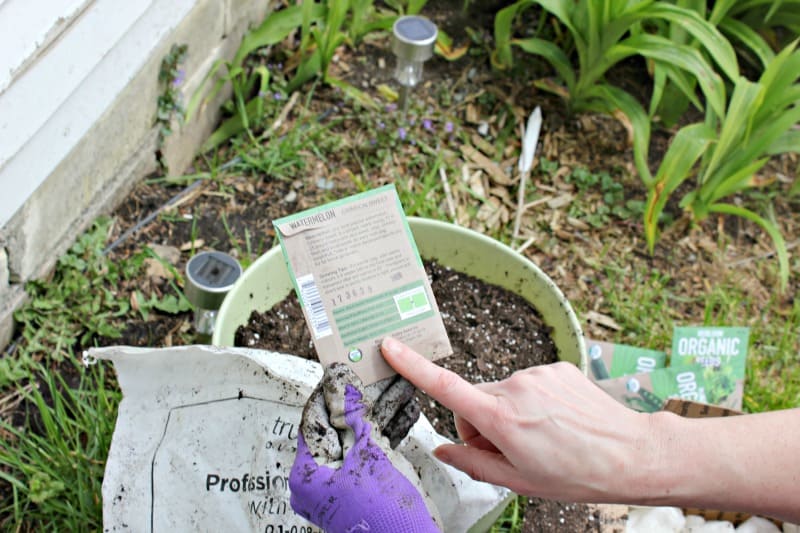
Container Garden Drainage
Whether you’re talking about flower pot drainage or vegetable container garden drainage, you have a few different options. Before you begin, it’s important to be sure that the seeds you want to plant are ones that will do well in containers. Always check the back of the seed packet for important growing tips.
What should I Grow?
If you’re looking for vegetables that grow in shallow containers, try lettuce, arugula, spinach, onions, and radishes. They don’t have root systems that extend too far down. You can easily add a layer of small pebbles at the bottom of your pot for extra drainage. Check out the variety I’m using from True Leaf Market garden seed packets.
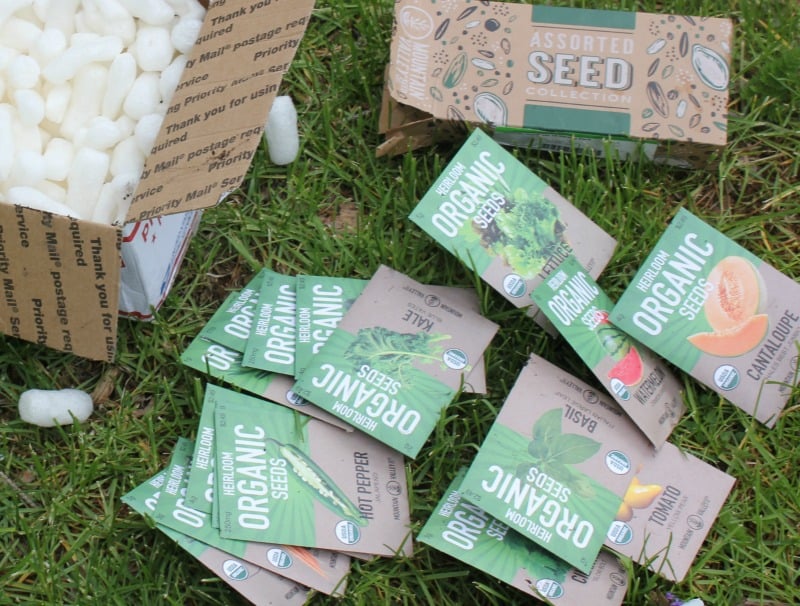
For plants that grow in small pots, try herbs, strawberries, and leafy vegetables. You can also grow one cucumber or summer squash plant. But, with a small pot, it’s even more important to follow these container garden drainage tips.
True Leaf Market offers a huge selection of seeds of every kind including herb, flower, vegetable, microgreens, sprouts, grains, and cover crops. They are an independent seed company. And, many of their varieties of seeds are recommended by the Utah State University Cooperative Extension Service. I started with their organic, heirloom variety pack which are all organic, open-pollinated, heirloom, and non-GMO.
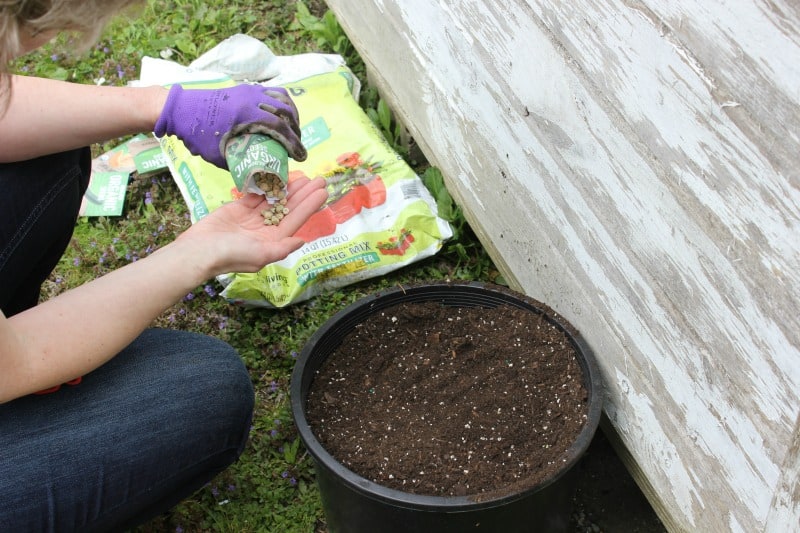
When you’re choosing your seeds, a few great options are below. You can find them at True Leaf Market.
- Chard
- Lettuce
- Tomatoes
- Peppers
- Eggplant
- Summer squash
- Greens
- Pole beans
- Herbs
- Peas
You may have success with other seeds as well, but these are the easiest choice. And, following these container garden drainage tips will help you’ve even more successful.

Fast-growing vegetables in pots
I hate waiting for my seeds to germinate. Winter is so long in Vermont that when spring gets here, I’m excited to get started. After I’ve ordered my seeds, followed these container garden drainage tips, and placed my containers out in the sun, I want to see results quickly.
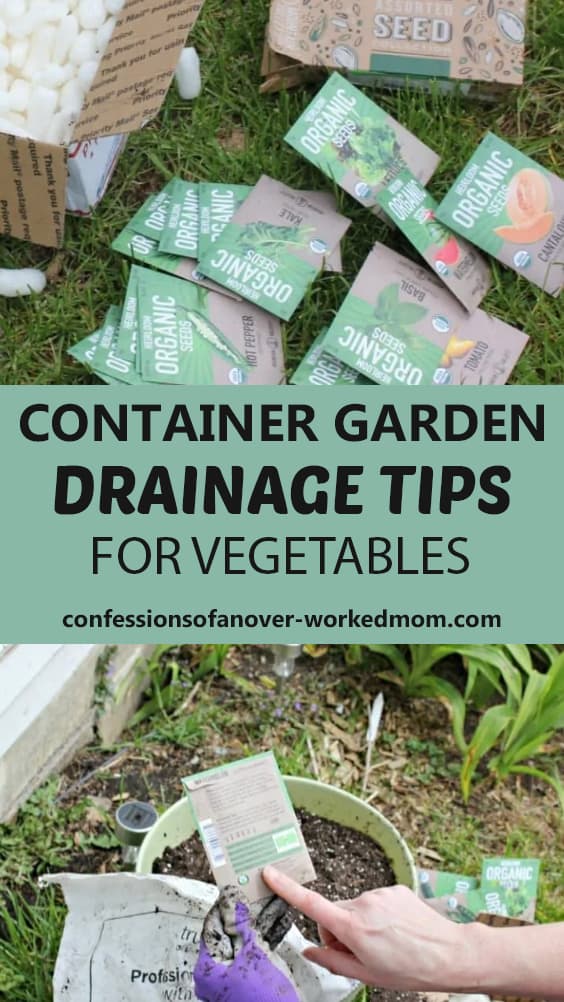
If you’re as impatient as I am, here are a few fast-growing container vegetables you can get at True Leaf Market that you should see results within about two months.
- Lettuce
- Arugula
- Spinach
- Beets
- Green Onions
- Radishes
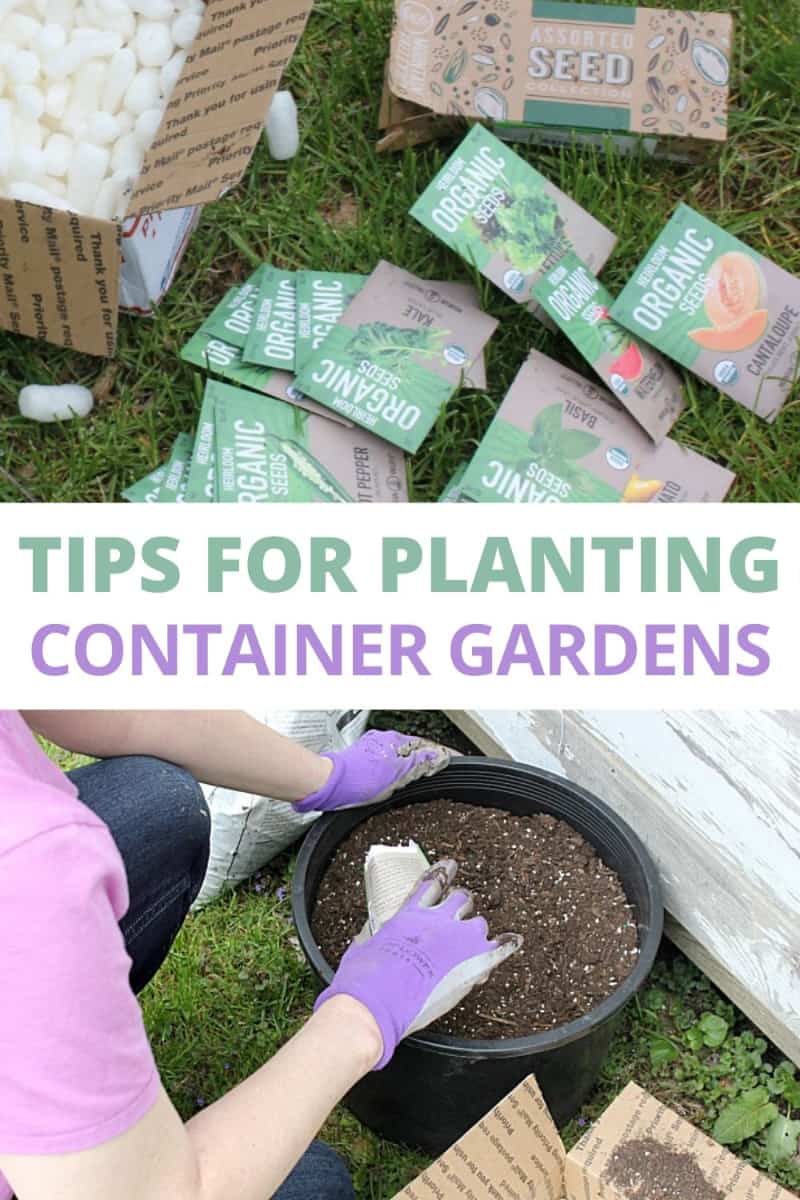
Growing vegetables in pots for beginners
If you’re new to container gardening, you might be wondering why these container garden drainage tips even matter. Can’t you just stick the seed in some dirt and have it grow? Well, you can sort of. But you won’t have a very healthy plant. When you plant seeds in a traditional garden, the soil contains decaying matter, rocks, pebbles, etc.
When it rains, the water lands on the ground and is slowly filtered through the levels of dirt and rocks. It forms pockets and the roots of the plants can use the moisture in those pockets.
Learn more about topping pepper plants.
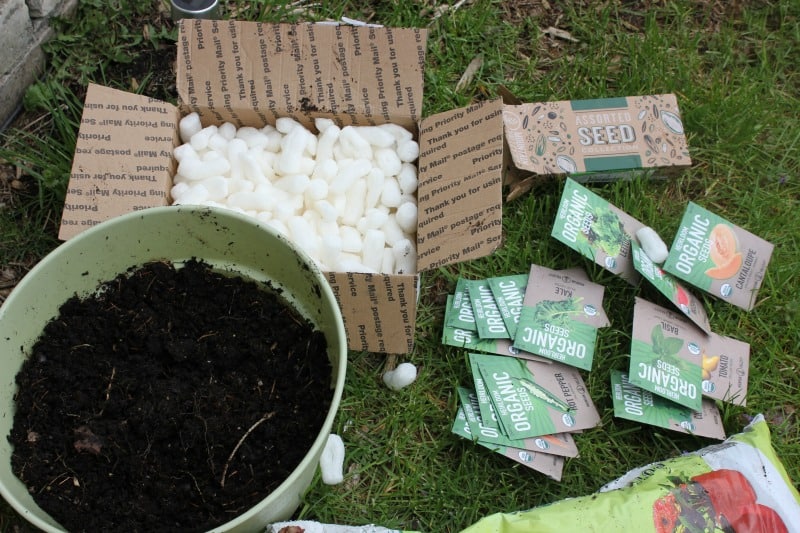
Why do gardeners use drainage in their planting containers?
When you plant a seed in a container, the potting soil has very little drainage material. The water lands in the pot and immediately heads to the bottom. If your seeds and/or plant roots are way up the at the top, that’s not very helpful.
You need to add drainage material and allow for water flow by poking holes in the bottom of your container if they aren’t already there. Add a layer of packing peanuts or rocks at the bottom and middle of your pot to allow for drainage.
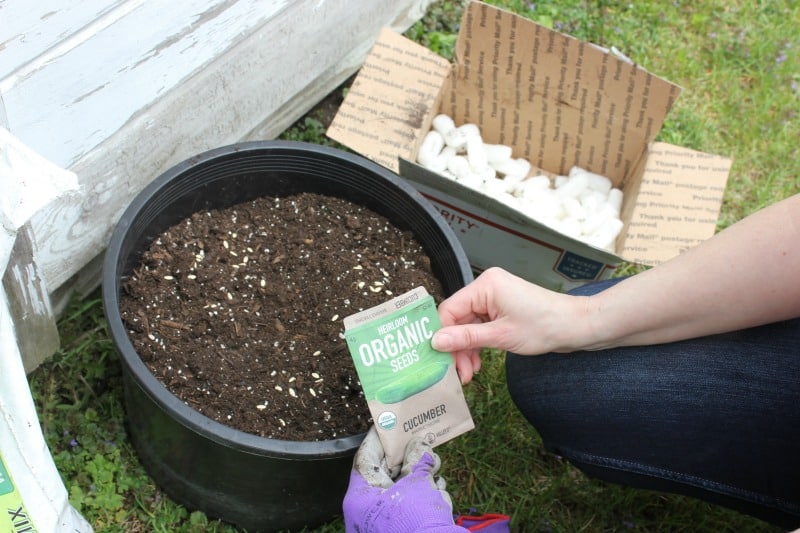
What types of pots should I use?
One of the reasons I garden is to help keep our grocery bill down. I love fresh vegetables and I love preserving. So, having my own vegetables lets me do these things with less expense. Following these container garden drainage tips makes it more likely I will have healthy plants.
I am always looking for cheap containers to grow vegetables in. But, you have to be careful when you choose them. They need to be the right size and the right depth for the vegetable you’re planting.
And, you will need to improve drainage by adding compost to improve your soil. Instead of using garden dirt, try a mixture of soil and a potting mix. These container garden drainage tips will help your plant be healthier. But, if you try to grow in the wrong type of pot, they won’t help much.
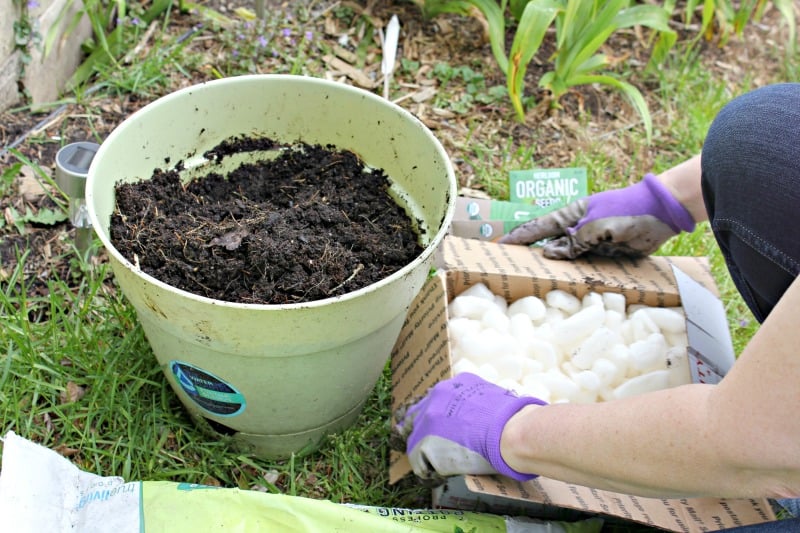
Is one drainage hole enough?
One of the most important container garden drainage tips I can offer is to be sure your pots have drainage holes. The first year I tried container gardening, I had no idea the pots needed holes. After the first good rain, I had containers filled with water and dirt. The water had no way of getting out of the container.
If you buy pots from the garden center that have drainage holes in them, simply pop out the covers and you should be fine. However, if you are making your own pots out of buckets, you need to add drainage holes to the bottom sides of the planter. I would recommend at least four holes.
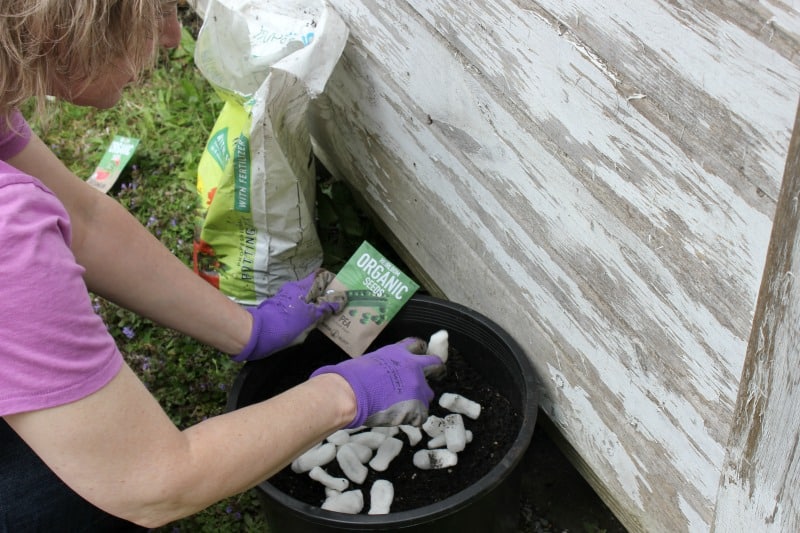
What do you put in the bottom of a planter for drainage?
For a small container, pebbles or rocks work well. But, if you have a larger planter, you can add packing peanuts, crushed milk jugs, and crushed soda cans. These allow for better drainage in large containers and aren’t as heavy as rocks. One of the best ways to get good container gardening drainage is to add two levels of drainage materials.
- Pebbles
- Rocks
- Pinecones
- Crushed soda cans
- Packing peanuts
- Coarse sand
- Lava rock
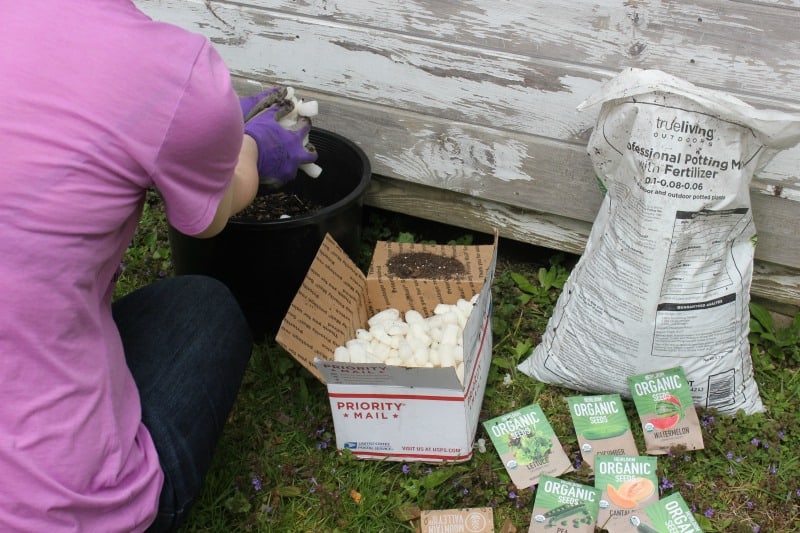
Summary container garden drainage
- Choose seeds that will be successful in containers like the ones I got at True Leaf Market.
- Choose the right size and depth of container for each plant
- Use a combination of soil and a potting mix
- Add compost to improve drainage
- Be sure the pots have drainage holes
- Add layers of pebbles, rocks, or styrofoam peanuts to improve drainage
More gardening articles
- Growing salad greens and microgreens
- How to get rid of slugs
- Plants for bees and butterflies
- Growing onions in containers
- Baking soda for tomato plants

Ellen is a busy mom of a 24-year-old son and 29-year-old daughter. She owns six blogs and is addicted to social media. She believes that it doesn’t have to be difficult to lead a healthy life. She shares simple healthy living tips to show busy women how to lead fulfilling lives. If you’d like to work together, email info@confessionsofanover-workedmom.com to chat.

This is good info. Here in the desert the soil drys out fast so I learned the hard way that we need 1-2 drainage holes. My husband put way too many holes in the pot and our cucumbers needed watering 3 times a day
Thanks, Tara! We have a really high water table & frequent rains in Vermont. If I don’t put enough holes in the bottom, we have mud.